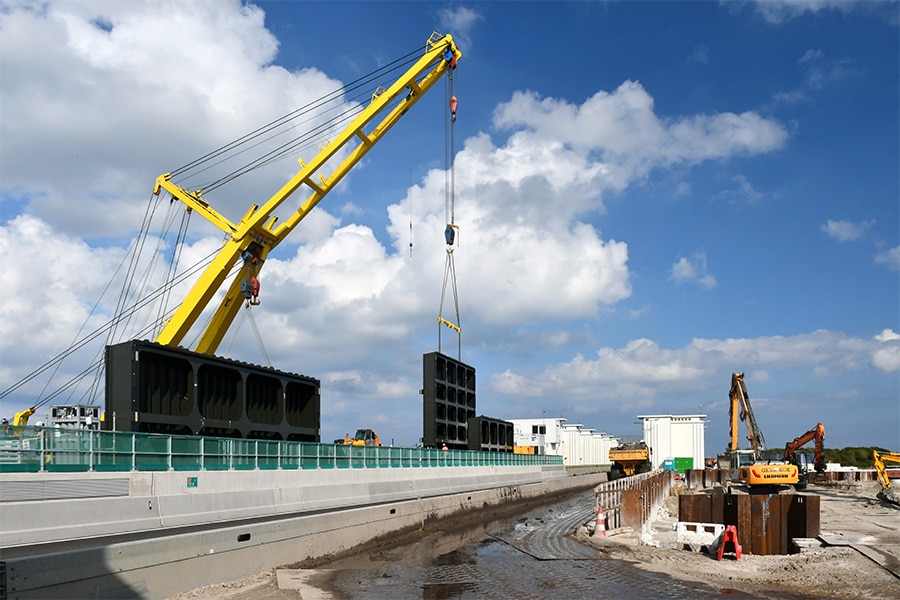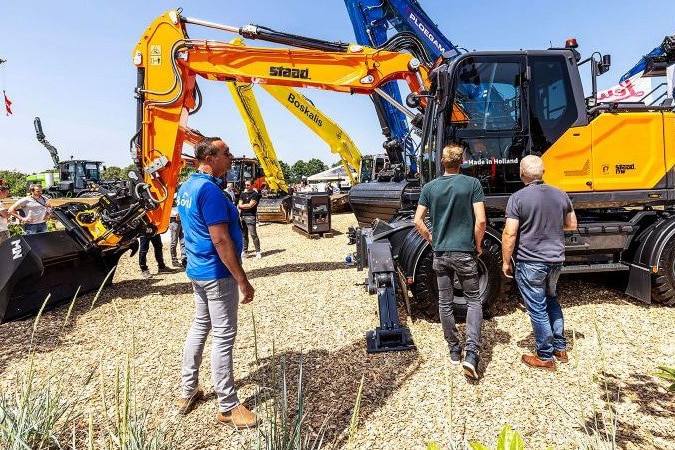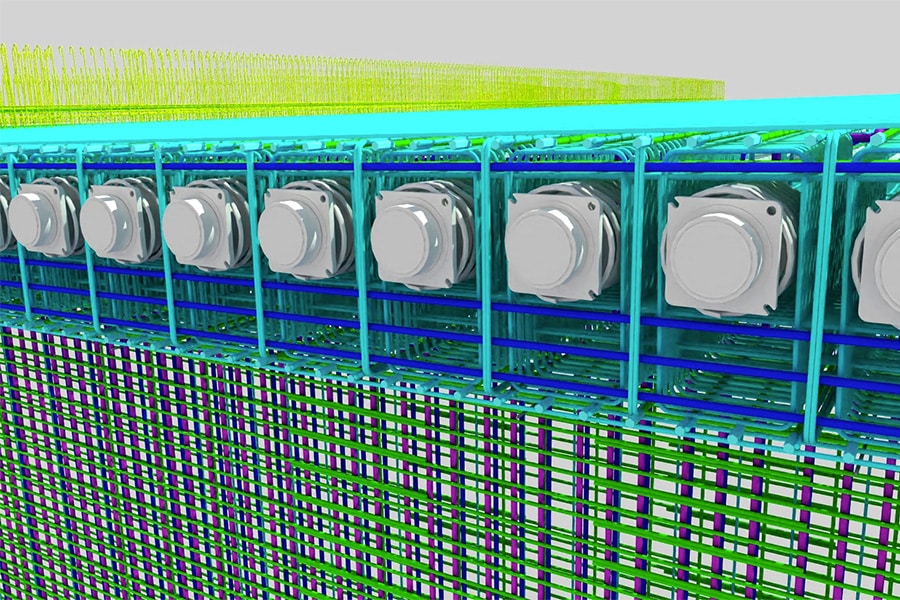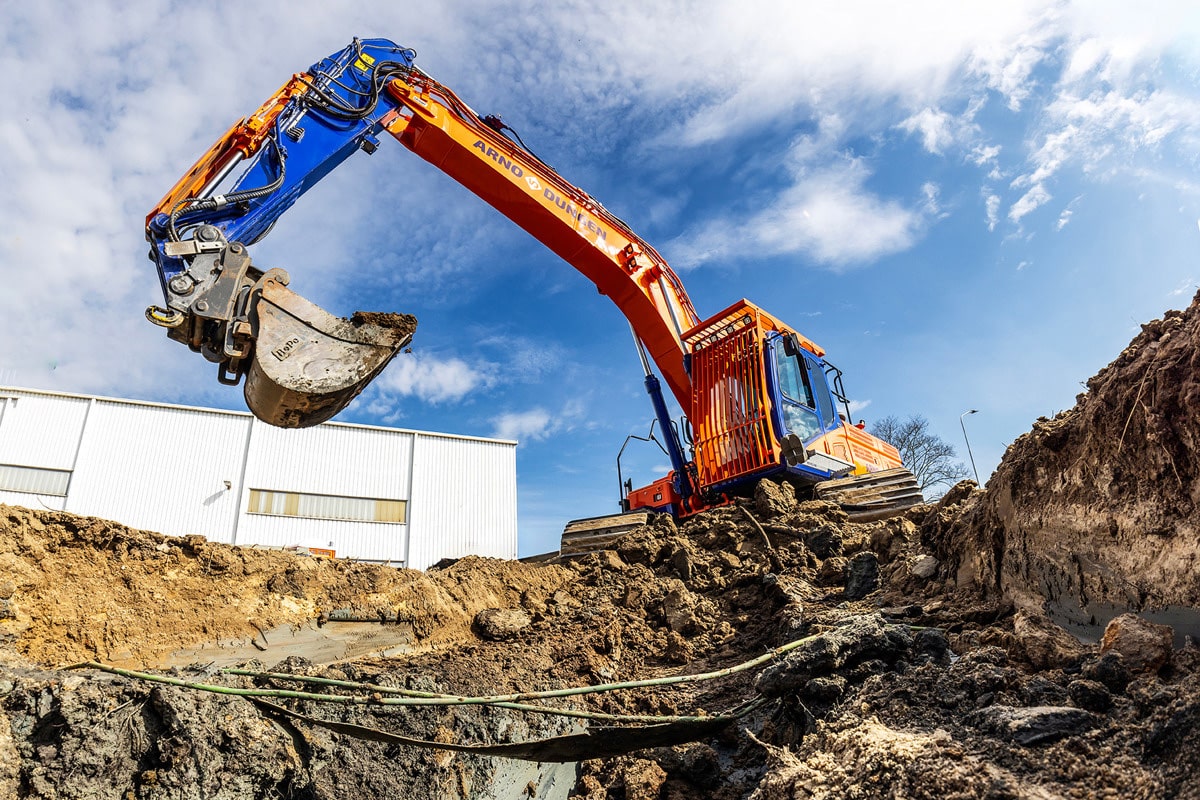
Toward autonomous forklifts for outdoor use
Linde and the University of Aschaffenburg present the results of the KAnIS research project
Intralogistics specialist Linde Material Handling (MH) and the University of Aschaffenburg (UAS) presented the results of the research project "KAnIS - Cooperative Autonomous Intralogistics Systems" with live demonstrations at the test site at the Linde plant in Aschaffenburg at the end of 2023. In different subprojects, solutions were developed for the demanding applications of autonomous forklifts, which transport loads both indoors and outdoors. The focus was on the cooperative capability of these trucks, which exchange information in real time via a 5G network and an edge server and can warn each other of obstacles to avoid collisions.
"Autonomous trucks will gradually take over more and more transportation tasks," predicts Stefan Prokosch, initiator of the KAnIS project at Linde MH. As a technology leader in the industry, the intralogistics specialist wants to make the benefits of autonomous trucks available to customers who use forklifts to transport goods or load and unload heavy trucks. "However, the requirements for forklifts working in outdoor areas are much higher than those for trucks used only indoors. They must have the ability to drive up ramps, they drive in close proximity to more people and other traffic, and they must be able to operate in different weather conditions and temperatures," Prokosch explained. "Thanks to the joint research work with Aschaffenburg UAS, we have been able to develop feasible solutions for these complex requirements. Once the project is completed, these findings will provide an essential basis for further development projects." The collaboration also provided clear added value for the university, explained project manager Prof. Dr. Hans-Georg Stark: "For us, the KAnIS project was a very complex, interdisciplinary research project. Ten professors and numerous research assistants and students were involved. Both project partners benefited greatly from the intensive exchange between the scientific research activities of Aschaffenburg UAS and Linde MH's long-standing expertise in intralogistics and truck development."
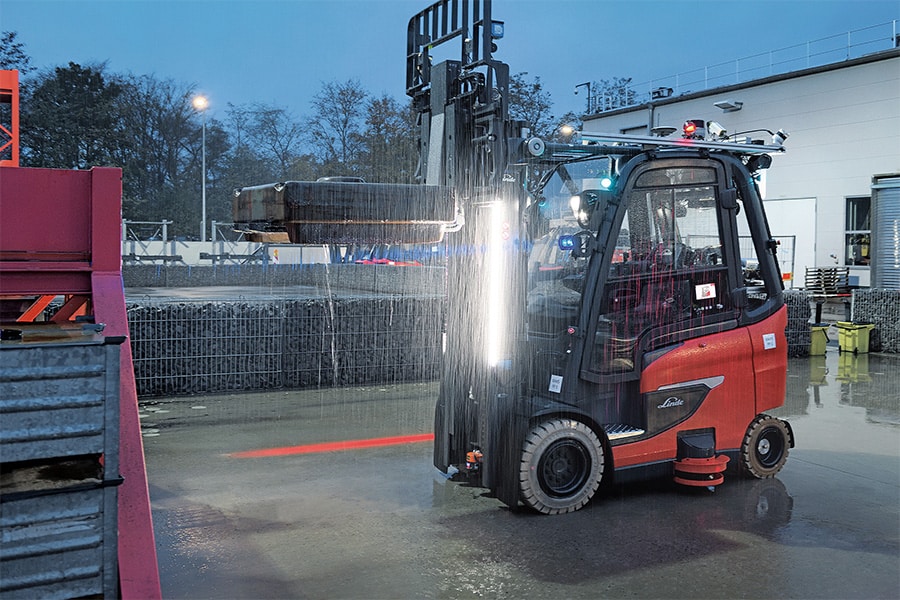
Hands-on test scenarios under realistic conditions
Four Linde E20, E25 and E30 electric forklifts with lifting capacities from 2.0 to 3.0 tons were automated and equipped with electro-hydraulic controls (Linde Steer Control), the Linde Safety Pilot assistance system with electronic load diagram and an integrated fork positioner. "The practical implementation of the research results was an important aspect for both Linde MH and Aschaffenburg UAS," emphasized Mark Hanke, Pre-Development Department Head at Linde MH. Starting next year, the trucks will be further developed and tested so that they can perform four specific material transport tasks in the future. These include transporting gitter boxes and pallets of batteries and moving truck frames and protective covers, which are to be transported on special load carriers from the pre-processing line to the main assembly lines.
The first two applications are purely outdoors, while the other two require the trucks to travel both indoors and between halls. They require ramps of 8 percent and other AGVs and manually operated trucks in the halls. To ensure that the four KAnIS forklifts can safely pick up pallets, gitterboxes and metal frames even if they are not exactly aligned with the floor, they are equipped with a mobile camera mounted between the forks. This measures the lowering of the fork carriage so that the forks can be positioned correctly through the side shift. The design of the truck frame, battery cover and counterweight were also modified. "Our goal was to integrate the safety scanners, cameras and sensors as much as possible into the contours of the truck so that the dimensions of the truck remain as close as possible to the standard version," says Hanke. Inside, the trucks locate themselves via laser scanners; outside, they use differential GPS (Global Positioning System), a method of increasing GPS accuracy. They also have additional sensors for transitioning from indoor to outdoor areas. Unlike their manually operated counterparts, the automated forklifts always drive in reverse on their defined routes to prevent the load from sliding off the forks in case of an emergency stop.
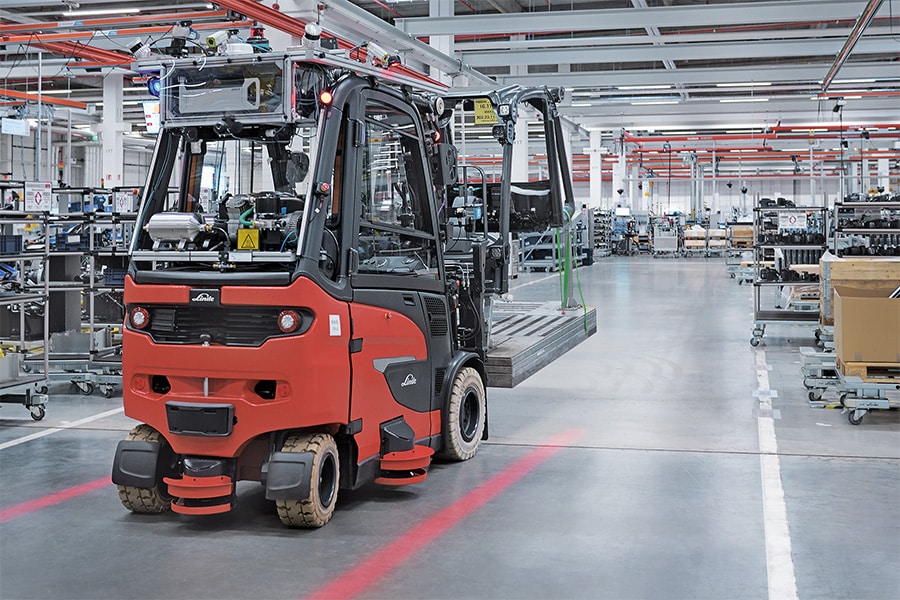
Real-time communication with trucks and infrastructure
A particular focus of the research project was the perception of the automated forklifts' environment to ensure reliable interaction with other road users. For this purpose, the trucks are equipped with 3D scanners and HD cameras in addition to the sensors of the person protection system. The camera data is the basis for detecting and classifying objects using AI algorithms and locating them to adjust the truck's speed and slow it down to a stop. But that's not all. Another important issue focused on critical situations that arise when people are in areas, which cannot be detected by the forklift's sensors, and do approach the truck's travel path. This is where cooperation between forklifts comes into play, because if another forklift is nearby, it can relay the relevant information. However, this requires real-time transmission of the sighting data. For this purpose, Linde has set up a private 5G network at the Aschaffenburg plant. The observation data is transmitted from the forklifts to an edge server, which uses the locally detected objects to create a global list of all detected objects and sends it back to the forklifts.
The test was conducted with a crash test dummy that suddenly comes out from behind a wall and "runs" into the path of the forklift. Without cooperation with other trucks, the automated forklift cannot stop in time and collides with the dummy. However, if it receives real-time information from a nearby forklift, it can anticipate the dangerous situation in advance and brake in time. Because it is not always possible to assume that a second forklift is nearby, eight stationary 3D laser scanners were installed at intersections and access points along the routes the KAnIS forklifts will travel in the future. The local object lists from the stationary laser scanners are also aggregated on the edge server and the information is made available to all vehicles.
"Fast wireless networks are the prerequisite for autonomous forklifts to work together in outlying areas and respond in real time to unforeseen traffic situations," emphasized Prof. Dr. Klaus Zindler, Vice President for Research and Transfer at Aschaffenburg UAS. "Our goal is to develop general standards and algorithms using AI methods, which can then be flexibly applied to different trucks and applications and continue to learn."
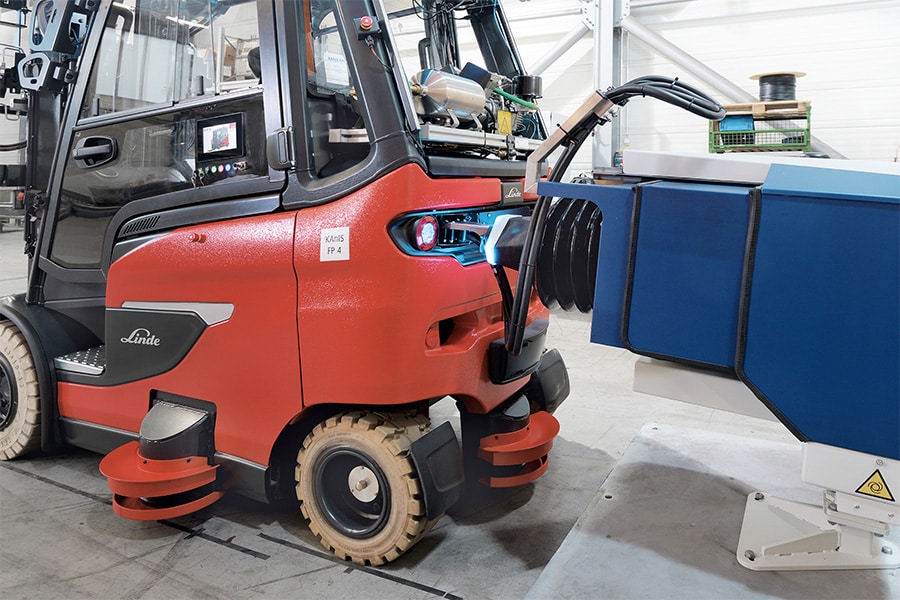
Cleaning system for sensors, battery charging by robot
Another project team investigated how to clean the optical sensors close to the ground if they become dirty from water splashes in the rain or from a wet road surface. This is crucial because when reliable object detection is no longer possible, the driver protection system automatically brings the truck to a safe stop. To prevent this, the project team developed a cleaning system that uses compressed air to blow away dirty water droplets that have collected on the laser scanners.
Yet another project team explored possible solutions for autonomous charging of forklift batteries. The result was an AI-based robot that connects the charging plug to the forklift's charging station. The back of the forklift was modified accordingly and an automatically operated loading ramp was added to protect the charging system from dirt and splash water.
Motrac
Motrac is since 1954 leading total provider of internal logistics and exclusive importer of Linde lift and warehouse trucks. The trucks of the innovative top brand Linde meet the highest standards. Motrac takes all the worry out of your hands and offers a 24/7 maintenance service plus expertise and engineering for the complete set-up of automated warehouses.
Learn more: www.motrac.nl
